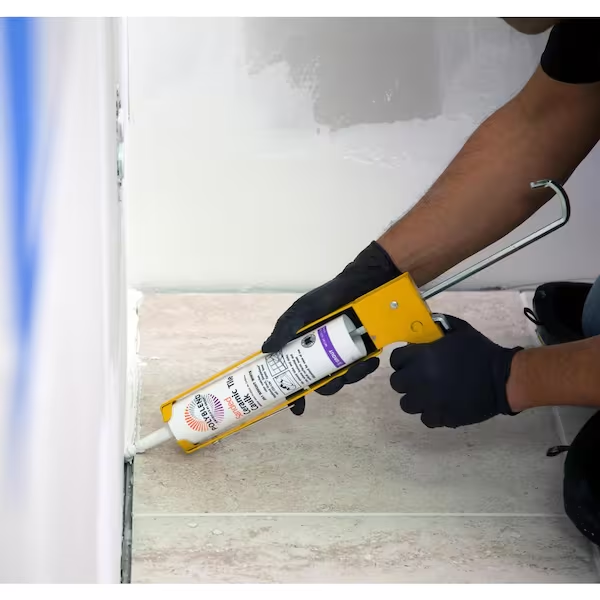Fire safety can make a big difference in keeping your home safe. Often, we don’t think about the possibility of a fire until it happens. But waiting for a fire before taking action is not a good idea. National and local codes require us to have alarm systems that warn us if there’s a fire. This article will discuss smoke alarms and fire alarm systems differences. Which one does your building need?
Whether you are a homeowner or work in the industry, this article is essential for you to read.
Let’s get started!
Fire Alarm Systems
Fire alarm systems have different parts that work together to make a loud noise during a fire. An initiating device could be a smoke detector, heat detector, carbon monoxide detector, multi-sensor detector, or manual pull station. These devices send alarm signals to the fire alarm control panel. The control panel then sends signals to output devices like horns or bells, creating loud sounds and flashing lights, warning everyone in the building.
Modern fire alarm systems do more than make noise. They can automatically notify emergency services, locate where the fire is, and help firefighters respond better. They can also work with other building systems – unlocking doors, calling back elevators, and shutting down ventilation to stop the fire and assist people in escaping. Some systems might even activate fire suppression systems like sprinklers until help arrives.
Figure 1: Smoke Alarm Systems
Fire alarm systems are divided into two main categories: Conventional and Addressable. A conventional system tells you which zone a device has activated, while an addressable system tells you the exact device number and location that detected the fire. Every device has its address or location in addressable systems, so it’s easy to know which detector was activated. This feature makes addressable alarm systems perfect for large buildings.
Figure 2: Addressable Vs. Conventional Fire Alarm Systems
Because fire alarm systems are complicated and expensive, you usually don’t find them in regular one- or two-family dwellings.
Smoke Alarm Systems
Smoke alarm systems are an excellent choice for individual residences. When a smoke alarm senses fire, it makes a loud sound to alert you. They work independently and don’t need a control panel to operate. Therefore, they are both input and output devices. There are two main types of smoke alarms:
1. Hardwired
- Connected to the building’s wiring system.
- Usually equipped with a backup battery.
.
Figure 3: Hardwired Smoke Alarm Systems
2. Battery-Operated
- They are powered by batteries, making them suitable for renovations without tearing down ceilings.
- Batteries typically need replacing once a year, but some can last for 10 years.
Both hardwired and battery-operated smoke alarms can be connected or not connected together. But what does that mean?
Connected smoke alarms are linked. If one detector detects a fire, all alarms in the building sound off. For example, if the basement alarm senses a fire, all alarms in the entire building make noise. This connection can be through wires or wirelessly with Radio Frequency (RF) or Bluetooth technology.
Note that connecting smoke alarms with Bluetooth technology comes with issues. The detectors must be close enough to each other for Bluetooth to work. Also, walls can block the Bluetooth signal.
Figure 4: Left: Hardwired Interconnected Smoke Alarms, right: Wireless Interconnected Smoke Alarms
These smoke alarms can also have smart features. They connect to your smartphone, allowing you to control them and receive notifications for fires or low batteries.
To help you understand your choices, we’ve created a diagram and a table with information on 10 different types of smoke alarms for your home. This way, you can easily choose the one that fits your needs.
Figure 5: Smoke Alarm Types Diagram
Please note that “connection” here means the connection between smoke alarms.
Table 1: Smoke Alarm Types
Another way that smoke alarms can be categorized is by the technology they use to detect smoke.
1. Ionization
More responsive to fast-burning, flaming fires that produce larger smoke particles. They use a small amount of radioactive material to ionize air, and smoke disrupts the current flow, triggering the alarm.
Figure 6: Ionization Smoke Alarms
2. Photoelectric
More responsive to smoldering fires that produce smaller smoke particles, like those from electrical malfunctions or burning plastics. They use a light beam and a sensor. Smoke enters the chamber, scatters the light, and triggers the alarm.
Figure 7: Photoelectric Smoke Alarms
3. Combination alarms that integrate both technologies in one unit are also available.
Remember that smoke alarms can also include heat and Carbon Monoxide (CO) sensors. This combination makes them more reliable for detecting fire.
Smoke Alarms Vs. Smoke Detectors
Let’s address the common confusion regarding the terms “smoke alarms” and “smoke detectors,” which are often used interchangeably. It’s time to clarify their distinctions once and for all.
Smoke detectors are integral components of fire alarm systems. They cannot produce sound independently upon detecting fire. Instead, their role is to identify fire and send a signal to the control panel, which, in turn, activates the alarm devices. Consequently, smoke detectors cannot operate independently. On the other hand, smoke alarms are standalone devices. They can detect fire and initiate alarm sounds independently, requiring no additional devices.
In summary, smoke detectors solely detect fire, while smoke alarms detect fire and trigger alarms. Smoke detectors can have all smoke alarm features except raising the alarm. Despite the persistent interchangeability of these terms, let’s use them accurately and promote correct usage.
The table below provides a concise overview of the distinctions between smoke alarms and smoke detectors:
Table 2: Smoke Alarms Vs. Smoke Detectors
When it comes to smoke alarms and fire alarm systems differences, it is important to know where using each system is required.
In what follows we will discuss in which residential properties you need to install fire alarm systems and smoke alarms.
Which Properties Require Installing Fire Alarm Systems?
Let’s talk about when fire alarm systems are needed. Usually, these systems are expensive and complex, so you don’t find them in individual homes. But which places need them? The answer lies in the local code!
1. More than Two-Family Dwellings
According to the Philadelphia Building Code (IBC) 2018, you should have a manual fire alarm system1 in more than two-family dwelling units if:
- Any dwelling unit is three or more stories above the lowest exit level.
- Any dwelling unit is more than one story below the highest exit level.
- The building has more than 16 dwelling units or sleeping units.
However, there are exceptions:
- There is no need for a fire alarm system if the building is two stories or less, with fire partitions separating units with at least one-hour fire-rated assemblies, and each unit has an exit directly outdoors.
- No manual fire alarm boxes are needed if the whole building has an automatic sprinkler system that activates the alarms when the sprinkler starts working.
- No fire alarm system is required in buildings without interior corridors and protected by an approved automatic sprinkler system, given certain conditions. But there’s a condition: each living space must have a door leading straight outside or be connected to open-ended corridors.
Important Note: According to the Philadelphia Building Code (IBC) 2018, high-rise buildings (buildings with an occupied floor located more than 75 feet above the lowest level of fire department vehicle access) have different requirements. For more information, refer to section 907.2.12 of the code. Therefore, the above requirements apply only to apartment buildings with a height below the threshold for high-rise buildings.
2. Mixed-Use Buildings
Also, according to the Philadelphia Fire Code (IFC) 2018, a manual and automatic fire alarm system is needed in all mixed-use buildings if the non-residential area is below the residential area. This system should have smoke detectors in the non-residential area, manual fire alarm boxes at exits, and alarms throughout the building.
Exception: A fire alarm system is not required if there’s an automatic sprinkler system throughout the non-residential area.
Note: Every year, a qualified electrician or fire alarm inspector needs to inspect the fire alarm system in your building to make sure it is working properly and safely.
Which Properties Require Installing Smoke Alarms?
According to the Philadelphia Building Code (IBC) 2018, all one- and two-family dwellings need smoke alarms. Here’s what it says:
1. One- and Two-Family Dwellings
Connected or not-connected smoke alarms must be installed in all one- and two-family dwellings. If more than one smoke alarm is needed within an individual dwelling unit or sleeping unit, they must be connected so that if one alarm goes off, they all do.
Note: In buildings built prior to 1988, interconnection between smoke alarms is not required.
The Licenses and Inspections (L&I) department made a document interpreting the code about installing smoke alarms in one- and two-family homes. It says that when there are changes inside a house, like repairs or additions requiring a permit, you need to put in smoke alarms like in new homes.
Therefore, for new construction and change of occupancy class, you must install hardwired smoke alarms.
However, if you are not removing walls or ceilings, you might not need hardwired smoke alarms (You can use battery–operated smoke alarms). But it doesn’t say precisely when you need hardwired fire alarms if you renovate the house. So, L&I has made a new policy to clarify. They say if you remove 50% or more of the inside walls or ceilings, then you need hardwired smoke alarms.
Remember that according to the L&I battery-operated smoke alarms must have non-removable (sealed) 10-year batteries.
For more details, you can check out the document here.
The table below summarizes the smoke alarms you can use for one- and two-family dwellings.
Table 3: Smoke Alarms Uses
2. More than Two-Family Dwellings
Additionally in buildings where fire alarm systems are required smoke alarms are required within dwelling units if they are not sprinkled throughout. But the smoke alarms in apartments CANNOT be battery-operated and they should NOT be connected to the whole building’s fire alarm system. They should only make noise in the dwelling unit where they are.
Also in existing high-rise buildings without sprinklers, each bedroom needs its own smoke alarm, in addition to the ones already installed in the vicinity of bedrooms.
3. Mixed-Use Buildings
Smoke alarms are required in the residential area of mixed-use buildings.
Highlighting Smoke Alarms and Fire Alarm Systems Differences
So far, we have discussed what fire alarm systems and smoke alarm systems are. Now, let’s discuss smoke alarms and fire alarm systems differences, outlined in the table below to help you better grasp their distinctions:
Table 4: Smoke Alarms and Fire Alarm Systems Differences
| Fire Alarm Systems | Smoke Alarm Systems | |
| Detection | Consists of smoke detectors, heat detectors, manual pull stations, and other fire monitoring devices. | Primarily detects smoke but can also include heat and CO detectors |
| Operation | Different parts work together to raise alarms in case of fire. | Self-contained devices that detect smoke and raise an alarm when they detect fire. |
| Power | Hardwired | Battery-operated or hardwired |
| Purpose | Designed to alert building occupants, initiate a response from emergency services, and control fire safety measures like shutting down HVAC systems to prevent smoke and flame spread. | Provides an immediate alert to residents for safe evacuation before a fire spreads. |
| Usage | Buildings with more than two-family dwellings (R1, R2, and R4 occupancies) and mixed-use buildings | One- and two-family dwellings (R3 Occupancies) |
| Cost | Expensive | Affordable |
Conclusion
Knowing smoke alarms and fire alarm systems differences is very important for staying safe. Even though people use these terms interchangeably, they work in different ways. It doesn’t matter if you live in a house or an apartment; ensuring your place has the proper fire safety measures is essential. If your home still needs them, installing them now is crucial. Remember, spotting a fire early is a must for your safety.
If you still need to figure out the best solution for your needs, feel free to ask questions in the comments. Understanding these differences and taking action can significantly improve your readiness for fire emergencies and make your home safer for you and your loved ones.
In manual fire alarm systems, people activate alarms by using pull or break-glass stations placed on building walls. Conversely, automatic systems employ sensors like smoke, heat, or flame detectors to detect fire or smoke.










0 Comments